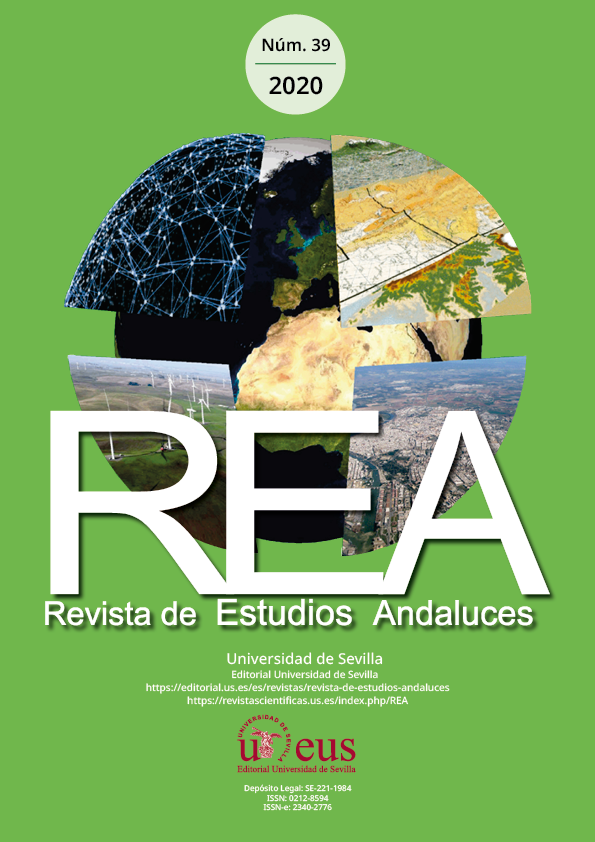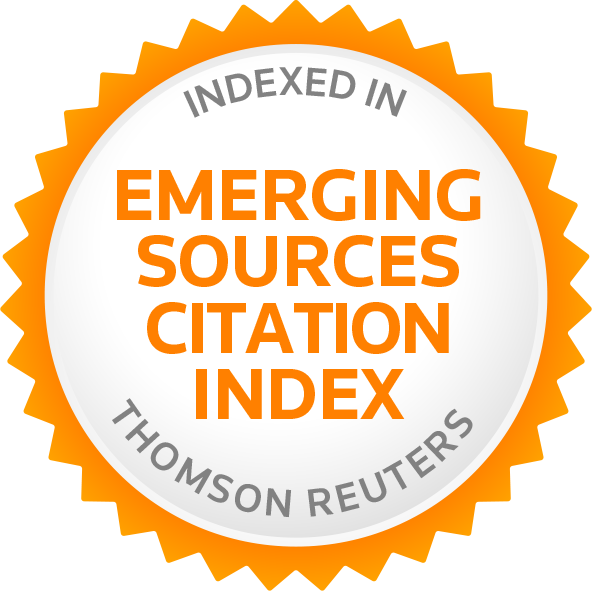Global R&D in the Aerospace and Defence Industry. Knowledge Creation with Local Firms in Host Countries
DOI:
https://doi.org/10.12795/rea.2020.i39.08Palabras clave:
Industria aeroespacial, I D offshore, spillovers de conocimiento de las universidades, spillovers de conocimiento militar, innovaciónResumen
En este artículo se analiza el impacto de tres factores del país anfitrión (HC), como los knowledge spillovers procedentes de la I+D aeroespacial, la I+D militar y la investigación de Universidades en la capacidad de creación y colaboración con inventores del HC de una muestra de empresas aeroespaciales que incluye OEM (fabricantes de equipos originales) y proveedores especializados (TIER). Para ello se emplea una muestra de 874 plantas internacionales de compañías aeroespaciales con información sobre los respectivos HC. Los resultados evidenciaron la existencia de spillovers de conocimiento producidos en los HC con origen en la I+D aeroespacial y las instituciones de investigación. El grupo OEM es más eficiente que TIER en la apropiación de I+D aeroespacial. El grupo TIER está más globalizado y su conocimiento se basa más en su propia experiencia que en la I+D interna. Las empresas aeroespaciales extranjeras se benefician especialmente de los spillovers de conocimiento de las instituciones de investigación producidos en campos relacionados con la industria aeroespacial.
Descargas
Citas
Almeida, P. & Phene, A. (2004). Subsidiaries and knowledge creation: The influence of the MNC and host country on innovation. Strategic Management Journal, 25, 847–864. doi: https://doi.org/10.1002/smj.388
Asheim, B. T. & Coenen, L. (2005). Knowledge bases and regional innovation systems: Comparing Nordic clusters. Research policy, 34(8), 1173-1190. doi: https://doi.org/10.1016/j.respol.2005.03.013
Audretsch, D. B. & Feldman, M. P. (2003). Knowledge Spillovers and the Geography of Innovation. Handbook of Urban and Regional Economics, 4, 2713-2739. doi: https://doi.org/10.1016/S1574-0080(04)80018-X
Audretsch, D. B. & Feldman, M. P. (1996). R&D spillovers and the geography of innovation and production. The American economic review, 86(3), 630-640.
Audretsch, D. B. & Lehmann, E. E. (2005). Does the knowledge spillover theory of entrepreneurship hold for regions? Research Policy, 34(8), 1191-1202. doi: https://doi.org/10.1016/j.respol.2005.03.012
Audretsch, D., Lehmann, E. & Warning, S. (2004). University spillovers: Does the kind of science matter? Industry and innovation, 11(3), 193-206. doi: https://doi.org/10.1080/1366271042000265375
Azagra-Caro, J. M., Barberá-Tomás, D., Edwards-Schachter, M. & Tur, E. M. (2017). Dynamic interactions between university-industry knowledge transfer channels: A case study of the most highly cited academic patent. Research Policy, 46(2), 463-474. doi: https://doi.org/10.1016/j.respol.2016.11.011
Boutellier, R., Gassmann, O. & Von Zedtwitz, M. (2013). Managing global innovation: uncovering the secrets of future competitiveness. Springer Science & Business Media.
Braddorn, D. & Hartley, K. (2007). The competitiveness of the UK aerospace industry”. Applied Economics, 39(6), 715-726. doi: https://doi.org/10.1080/00036840500448391
Broekel, T., and Boschma, R. (2011). Aviation, space or aerospace? Exploring the knowledge networks of two industries in the Netherlands. European Planning Studies, 19(7), 1205-1227. doi: https://doi.org/10.1080/09654313.2011.573133
Butterworth-Hayes, P. (2007). UK aerospace faces major skills shortage. Aerospace America, 45(2), 4-6.
Cameron, A. C. & Trivedi, P. K. (1990). Regression-based tests for overdispersion in the Poisson model. Journal of econometrics, 46(3), 347-364. doi: https://doi.org/10.1016/0304-4076(90)90014-K
Cantwell, J. & Piscitello, L. (2005). Recent location of foreign-owned research and development activities by large multinational corporations in the European regions: the role of spillovers and externalities. Regional Studies, 39(1), 1-16. doi: https://doi.org/10.1080/0034340052000320824
Coe, David T. & Elthanan, Helpman (1994). International R&D spillovers. European Economic Review, 39, 859-887. doi: https://doi.org/10.1016/0014-2921(94)00100-E
Cohen, W. M. & Levinthal, D. A. (1990). Absorptive capacity: A new perspective on learning and innovation. Administrative science quarterly, 128-152. doi: https://doi.org/10.2307/2393553
Crabb, D. M. (1989). An investigation into the effects which aerospace industry offset trade agreements have on United States Air Force mission performance (No. AFIT/GLM/LSM/89S-11. Air force inst of tech wright-patterson afb oh school of systems and logistics)
CSO2015-67662-P (2014). Research project: Estrategia de Innovación Empresarial en España. Comportamientos Territoriales.
CSO2015-67662-P (2017). Research Project: La Brecha Digital en la Unión Europea. Modelos Explicativos, Predictivos y Espaciales.
D’Agostino, L., Laursen, K. & Santangelo, G., (2012). The impact of R&D offshoring on the home knowledge production of OECD investing regions. Journal of Economic Geography, 13 (1), 145-175. doi: https://doi.org/10.5465/AMBPP.2012.15692abstract
Dunning, J. H. & Lundan, S. M. (2009). The Internationalization of Corporate R&D: A Review of the Evidence and Some Policy Implications for Home Countries. Review of Policy Research, 26, 13–33. doi: https://doi.org/10.1111/j.1541-1338.2008.00367.x
ECORYS, F. (2009). Sector Competitiveness Studies-Competitiveness of the EU Aerospace Industry with focus on: Aeronautics Industry. In. European Commission, Directorate-General Enterprise & Industry.
Eriksson, S. (2000). Technology spill-over from the aircraft industry: the case of Volvo Aero”. Technovation, 20(12), 653-664. doi: https://doi.org/10.1016/S0166-4972(00)00009-2
Florida, R. (1996). The globalization of R&D: results from a survey of foreign-affiliated R&D laboratories in the USA. Research Policy 26(1), 85- 103. doi: https://doi.org/10.1016/S0048-7333(97)00004-8
Fontana, R., Geuna, A. & Matt, M. (2006). Factors affecting university–industry R&D projects: The importance of searching, screening and signalling. Research policy, 35(2), 309-323. Doi: https://doi.org/10.1016/j.respol.2005.12.001
Forés, B. & Camisón, C. (2016). Does incremental and radical innovation performance depend on different types of knowledge accumulation capabilities and organizational size? Journal of Business Research, 69(2), 831-848. doi: https://doi.org/10.1016/j.jbusres.2015.07.006
Gertler, M. S. (2003). Tacit knowledge and the economic geography of context, or The undefinable tacitness of being (there). Journal of Economic Geography. 3(1), 75-99. doi: https://doi.org/10.1093/jeg/3.1.75
Griliches, Z. (1990). Patent statistics as economic indicators: a survey. (No. w3301). National Bureau of Economic Research. doi: https://doi.org/10.3386/w3301
Guffarth, D. & Barber, M. J. (2013). The European aerospace R&D collaboration network. (No. 84-2013). FZID Discussion Paper.
Guimon, J. (2008). Government strategies to attract R&D-intensive FDI. OECD Global forum on International investment. doi: https://doi.org/10.1007/s10961-008-9091-1
Ha, Y. J. & Giroud, A. (2015). Competence-creating subsidiaries and FDI technology spillovers. International Business Review, 4(10), 605–614. doi: https://doi.org/10.1016/j.ibusrev.2014.11.001
Healey, G. (1999). Defence Industry Offset Association Position on Offset Issues. Trends and Challenges in Aerospace, 216.
Hollanders H., Van Cruysen, A. & Vertesy, D. (2008). Sectoral innovation systems in Europe: The case of the aerospace sector. Maastricht: MERIT
Jaffe, A. B., (1989). Real effects of academic research. American Economic Review 79(5), 957-970.
Jaffe, A. B., Trajtenberg, M. & Henderson, R. (1993). Geographic localization of knowledge spillovers as evidenced by patent citations. The Quarterly journal of Economics, 108(3), 577-598. doi: https://doi.org/10.2307/2118401
Jordá‐Borrell, R., Ruiz‐Rodríguez, F. & González‐Relaño, R. (2015). Factors and taxonomy of technology purchase (TP) by internationalized innovative companies in peripheral European regions. Papers in Regional Science, 94, S139-S174. doi: https://doi.org/10.1111/pirs.12172
Krämer, A., Kretzschmar, M. & Krickeberg, K. (Eds.) (2010). Modern infectious disease epidemiology: Concepts, methods, mathematical models, and public health. Springer Science & Business Media. Doi: https://doi.org/10.1007/978-0-387-93835-6
Kuemmerle, W. (1999). Direct investment in industrial research in the pharmaceutical and electronics industries - results from a survey of multinational firms. Research Policy, 28, 179-193. doi: https://doi.org/10.1016/S0048-7333(98)00110-3
Lee, Y. G., Lee, J. D., Song, Y. I. & Lee, S. J. (2007). An in-depth empirical analysis of patent citation counts using zero-inflated count data model: The case of KIST. Scientometrics, 70(1), 27-39. doi: https://doi.org/10.1007/s11192-007-0102-z
Liu, M., and Chen, S. (2012). MNCs’ offshore R&D networks in host country’s regional innovation system: The case of Taiwan-based firms in China. Research Policy, 41, 1107-1120. doi: https://doi.org/10.1016/j.respol.2012.03.016
López, C. & Vidal, M. (2010). External uncertainty and entry mode choice: Cultural distance, political risk and language diversity. International Business Review, 19(6), 575–588. doi: https://doi.org/10.1016/j.ibusrev.2010.03.007
Lopez-Otero, J. (2014). Geografía de los procesos de innovación del clúster aeronaútico andaluz. Revista de Estudios Andaluces, 31, 127-156. doi: https://doi.org/10.12795/rea.2014.i31.06
López-Otero, J., Cabrera-Contreras, G. & Jordá-Borrell, R. (2015). Aplicación de un modelo de regresión a análisis de los conductos de transferencia tecnológica del cluster aeroespacial andaluz. Revista de Estudios Regionales, 103, 189-220.
Lucendo-Monedero, A. L., Ruiz-Rodríguez, F. & González-Relaño, R. (2019). Measuring the digital divide at regional level. A spatial analysis of the inequalities in digital development of households and individuals in Europe. Telematics and Informatics, 41, 197-217. doi: https://doi.org/10.1016/j.tele.2019.05.002
McAdam, Rodney, Tom O’Hare & Sandra Moffett (2008). Collaborative knowledge sharing in composite new product development: an aerospace study. Technovation, 28,5, 245-256. doi: https://doi.org/10.1016/j.technovation.2007.07.003
McGuire, S. (2014). Global value chains and state support in the aircraft industry. Business and Politics, 16(4), 615-639. doi: https://doi.org/10.1515/bap-2014-0014
Mian, S. A. (Ed.). (2011). Science and Technology Based Regional Entrepreneurship: Global Experience in Policy and Program Development. Edward Elgar Publishing. doi: https://doi.org/10.4337/9780857936295
Morschett, D., Schramm-Klein, H. & Swoboda, B. (2010). Decades of research on market entry modes: What do we really know about external antecedents of entry mode choice? Journal of International Management, 16(1), 60–77. doi: https://doi.org/10.1016/j.intman.2009.09.002
Moser, R., Heiko, A. G. & Gnatsy, T. (2019). The Indian aerospace industry, 1, 40-56
Mowery, D. C. (2012). Defense-related R&D as a model for “Grand Challenges” technology policies. Research Policy, 41(10), 1703-1715. doi: https://doi.org/10.1016/j.respol.2012.03.027
Niosi, J. (2012). R&D Support for the Aerospace Industry: A Study of Eight countries and One Region: A Report. Aerospace Review, 12, 44-59
Niosi, J., and Zhegu, M. (2005). Aerospace clusters: local or global knowledge spillovers? Industry & Innovation, 12(1), 5-29. doi: https://doi.org/10.1080/1366271042000339049
Niosi, J. & Zhegu, M. (2010). Multinational Corporations, Value Chains and Knowledge Spillovers in the Global Aircraft Industry. Institutions and Economies, 109-141.
Nooteboom, B., Van Haverbeke, W., Duysters, G., Gilsing, V. & Van den Oord, A. (2007). Optimal cognitive distance and absorptive capacity. Research policy, 36(7), 1016-1034. doi: https://doi.org/10.1016/j.respol.2007.04.003
Parr, W. C. (2006). China Offshoring: Wave of Future. Aviation Week and Space Technology, 164(8), 88.
Polak, C. & Belmondo, S. (2006). Japan R&D Policies and Programs in the Aeronautic and Space Sectors. SERIC, Japan.
PWC. (2014). The runway to growth: Using market understanding to drive efficient innovation in the aerospace, defence and security industry.
PWC. (2016). Aerospace and Defense: 2015 year in review and 2016 forecast.
Rychen, F. & Zimmermann, J. B. (2008). Clusters in the global knowledge-based economy: knowledge gatekeepers and temporary proximity. Regional Studies, 42(6), 767-776. doi: https://doi.org/10.1080/00343400802088300
Stembridge, B. (2007). Eastward Ho!—The Geographic Drift of Global R&D. Knowledge Link newsletter from Thomson Scientific, 2007.
Thomson, R. (2013). National scientific capacity and R&D offshoring. Research Policy, 42, 517-528. doi: https://doi.org/10.1016/j.respol.2012.07.003
Zedtwitz, M., and Gassmann, O. (2002). Market versus technology drive in R&D internationalization: four different patterns of managing research and development. Research policy, 31(4), 569-588. doi: https://doi.org/10.1016/S0048-7333(01)00125-1
Wessner, C. W. (Ed.). (1999). Trends and Challenges in Aerospace Offsets. National Academies Press.
Zahra, S. A. & George, G. (2002). Absorptive capacity: A review, reconceptualization, and extension. Academy of management review, 27(2), 185-203. doi: https://doi.org/10.2307/4134351
Descargas
Publicado
Cómo citar
Número
Sección
Licencia
La edición electrónica de la Revista de Estudios Andaluces se ofrece en acceso abierto desde el número 28 publicado en 2011 hasta la actualidad. Las ediciones impresa y electrónica de esta Revista son editadas por la Editorial de la Universidad de Sevilla, siendo necesario citar la procedencia en cualquier reproducción parcial o total.
La Revista de Estudios Andaluces no cobra tasas por el envío de trabajos, ni tampoco cuotas por la publicación de sus artículos. La Revista es gratuita desde el momento de la publicación de cada número y sus contenidos se distribuyen con la licencia “CreativeCommons Atribución-NoComercial-SinDerivar 4.0 Internacional” , que permite al usuario de la Revista de Estudios Andaluces criterios que cumplen con la definición de open access de la Declaración de Budapest en favor del acceso abierto. Puede consultar desde aquí la versión informativa y el texto legal de la licencia. Esta circunstancia ha de hacerse constar expresamente de esta forma cuando sea necesario.
Aceptado 2020-01-28
Publicado 2020-02-25







